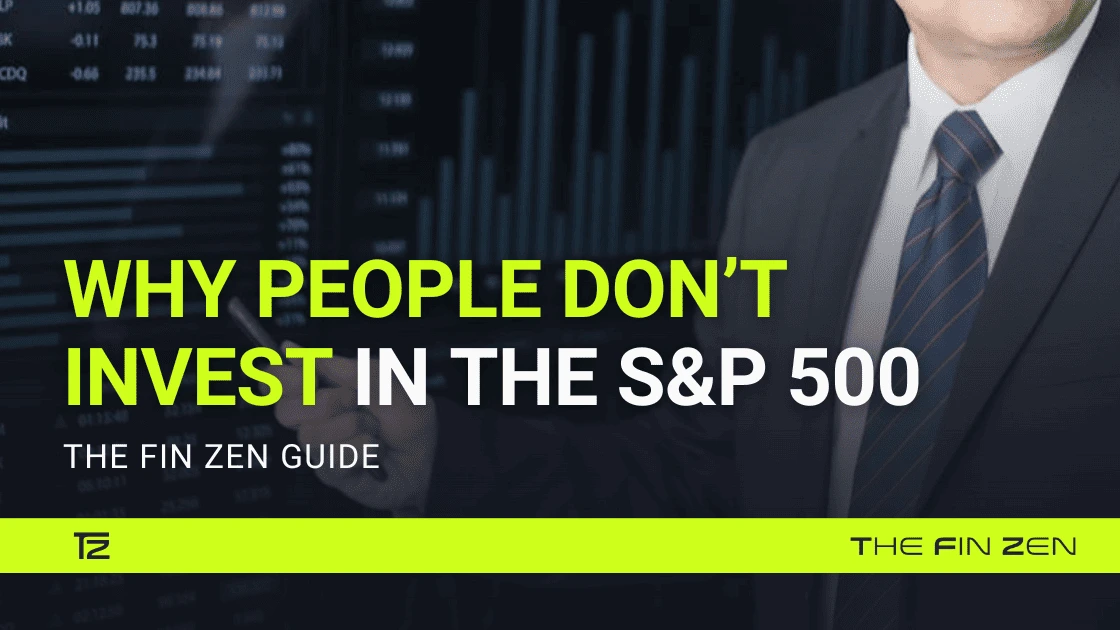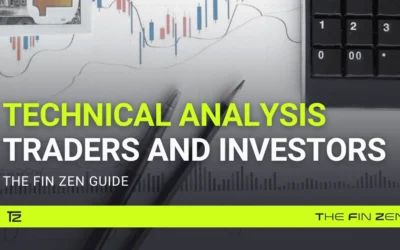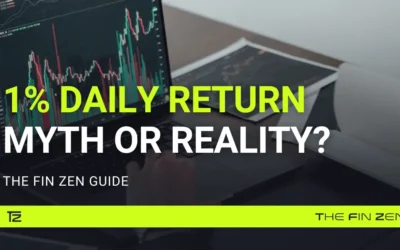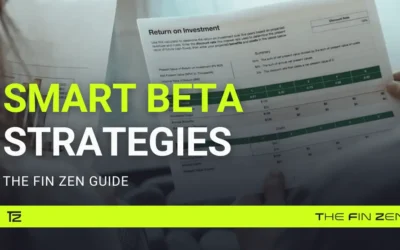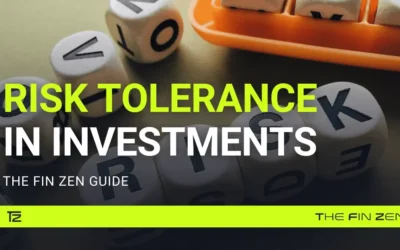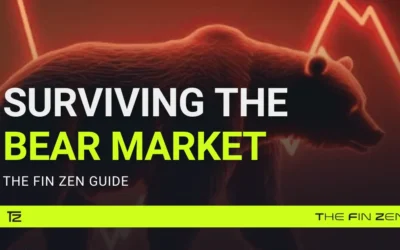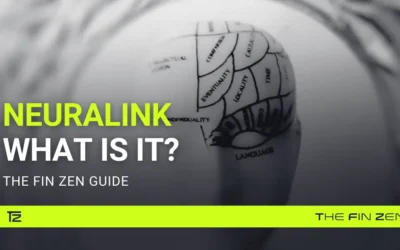In one form or another, human beings have been practicing investing since the dawn of time, as they say. Investing is basically the allocation of a resource, be it time, energy, goods, or money, in order to obtain a profit that should be in some percentage more than what we put in at the beginning. The multiplier is time, meaning that the price we pay to get more of what we invest is time. And risk.
Nowadays, we have a lot of asset classes in which we can put our money, but it is fair to say that in our contemporary society, the safest and most rewarding investing choice is and remains the S&P 500, the greatest index of all. Then why people don’t invest in the S&P 500?
There are many reasons why people avoid investing in uncomplicated asset classes like, for example, the S&P 500. Among these, there are financial illiteracy, cognitive biases like loss, and risk aversion. This is a mistake, and we will see why.
At The Fin Zen, we are on a mission to help people better understand finance and financial possibilities, and this article, just like all the others in our blog, has this very purpose.
So, ready to start? Let’s go!
Why people don’t invest in the S&P 500
The reasons behind the aversion to financial investments fall into two main categories that are inextricably dependent one on the other:
- lack of financial literacy
- dominance of the so-called behavioral biases, some of which we will see in detail
All of this, combined with a certain lack of risk tolerance, which is absolutely normal and actually has an evolutionary origin to which we owe our survival and prosperity as a species, results in a scarce propension to investment in the “safest” asset class of all: stocks and more than that, index funds.
Financial illiteracy
What do we mean by this concept? It is actually pretty straightforward, and it indicates a total or partial ignorance of the world of money, be it money management, taxes, or investments.
It is not possible to highlight one single cause of this widespread lack of knowledge. We are all individuals with different cultural, emotional (it matters, and you’ll see how), and psychological backgrounds.
But it is fair to say that the problem with financial literacy often lies in an emotionally charged meaning we naturally give money. According to our upbringing or the dominant sentiment in the culture that cradled us, money is often seen as evil, as something that comes after other, more important values. All of this causes an emotional attachment to this instrument that makes us fail to see it for what it is: a resource, a tool for our goals.
It is then only natural that such an attitude might cause a refusal to better learn how to manage, spend, earn, and invest money. And it must be mentioned that our societies indulge us in this refusal, failing to provide us with the necessary education.
This is a problem. A serious one, to be frank. Think of it: we use money every day, it’s in everything we do, and having no knowledge of this incredibly important and pervasive instrument leads to bad decision-making, unnecessary stress over it, and sometimes dire consequences. Concepts like accumulation plans, the power of compound interest, spending management, etc, should be taught in schools because they are as important as mathematics and writing. This is at least the opinion we have at The Fin Zen.
But we are here for you. Go on reading.
Biases, heuristics, and the contribution of behavioral economics
In 2002, the Nobel Memorial Prize in Economic Sciences was awarded to Daniel Kahneman, a psychologist. The reason why an expert in a field that apparently has nothing to do with economics won a prize for achievements in the development of Economic Science is that the premise is wrong. Psychology, as it turns out, has a whole lot to do with economics, especially with the choices we make when money (and everything else) is involved. To put it simply and be brief, Kahneman and his friend and colleague Tversky, who was also awarded the prize, through their experiments discovered some mechanisms that lie at the basis of our decisions, dismantling the then mainstream theory of the Homo economicus.
This theory maintains that when we have to make decisions related to money, we invariably choose the most rational option, meaning we tend to rationally evaluate the elements to pursue our utility or best interest. While it is somehow true that we pursue our best interests, the two Nobel laureates discovered that we are far from rational when it comes to analyzing the elements and making a decision. Kahneman and Tversky found out that our mind is characterized by some so-called cognitive biases that prevent us from choosing rationally.
This is incredibly relevant for investing because it has implications both in the irrational behavior that prevents people from starting to invest and, when finally they decide to do it, in the way we choose how to invest. These biases or errors are quite a handful; at the moment, more than 300 have been studied and isolated, so to speak. We will name just the most relevant to make our point.

Loss aversion and risk aversion
This is probably the single most relevant cognitive bias when we talk about investing. Loss aversion simply means that we are quite bad at processing losses, so we fear them. According to the Prospect Theory – this is the name of the theory elaborated by Kahneman and Tversky – we are twice and a half more afraid of losing something than we are happy when we obtain something. This means that getting a result is less impactful on our emotional state than losing something.
It is pretty obvious that this bias dominates our brains when we have to decide on an investment. So much so that, as it turns out, we often decide not to decide, which is, in any case, a decision. Similar to this is the risk aversion bias, which is prompted by the fear of loss and constitutes a part of the same spectrum. Because we fear losing our money, we tend to avoid risking it. Investing is a risk, no doubt about that.
Confirmation and selection biases
These two go hand in hand and can somehow overlap. Confirmation bias is a cognitive error that explains our tendency to look for evidence of opinions we already hold true. In other words, we are convinced that something is true, so in order to fortify this conviction, we actively search for elements that demonstrate its validity. Selection bias describes the process by which we discard all the possible evidence that is opposite of what we think and choose to believe or take into consideration only what confirms our beliefs.
How do we apply this to investing, or better, how do we address our lack of will to invest? Simple, we are convinced that the stock market is a scam, that only those who have money earn money and tend to consider only the instances in which people actually lost money in the stock market (1929, 1987, 200o, 2008, all very bad years for the S&P 500). We might also be prone to consider the story of that friend of our friend who lost everything in that investment. No, no better keep my money safe under the mattress. Simultaneously, we refuse to consider either that those people made very bad financial decisions or that there are also a lot of financially savvy people who did not lose money in those years.
Status quo bias
This is connected to the first cognitive error on our list and describes the tendency to avoid change, indulging in the illusion that the status quo will be better for us.
Obviously, this bias can be applied to describe the situation in which people decide not to start investing because that would represent a change in our normal and daily life.
Herd Mentality Bias
This cognitive error applies more to the decisions we make when we have already stepped up our game and have some money in financial assets. However, it can also explain why many people follow unchecked advice and decide not to invest. Basically, the herd mentality bias describes our attitude to following what the majority does and conforming to it, thinking that the majority can not be wrong. This error has some common terrain with our necessity for social proof. We are social animals, we crave approval and attention from our peers. One of the means by which we seek to quench this thirst for belonging is to do what the group does. Simple, normal, natural. Sometimes fatal! Ever seen the annual migration of lemmings?
So, if our social bubble, our herd, so to speak, does not invest, neither will we. At this point, it is important to note that biases and cognitive errors are not something we get infected with or develop. They are not a disease or a psychological problem. They are the mere description of mental mechanisms we all have as human beings, and they have actually played a significant role in our evolution and our – so far – success as a species.
So, they’re not something you should cure, nor are they something you can refuse to admit to. We all have these tendencies. In this awareness lies the key to their management.
Now, we would like to say two words about investing and trading.
What is investing and what is trading
There is a significant difference between these two activities. Both imply the use of a resource, mainly money, to get a profit that is in some percentage superior to the amount we used as principal. Both use time as a multiplier, but it is exactly in this that they differ: in the amount of time. Generally speaking, we talk about investing when we use our principal to buy assets that we keep at least (at the VERY least) for three to five years (mid-term investing), more typically for ten years to life.
Everything below the three-year term can fairly be considered trading. Now, all the asset classes can be used to invest, but not all of them can be used to do trading.
Particularly, you can do trading with:
- Stocks
- Forex (foreign exchange currency)
- Crypto
- NFT
And since we are explaining why people don’t invest in the S&P 500, it will be worth mentioning that trading is the next step. If you are afraid of investing, do not have a solid grasp on its principles, or for some other reason have no experience whatsoever in this field, trading is NOT for you. It’s like driving a Lamborghini without a driving license. Be warned.
Why people don’t invest and why they should invest in general
There are many reasons why you should decide to invest, but to keep it simple, you either invest for protection or to reach a specific goal (or for both). Investing should, at the very least, be done to protect your savings from inflation. No savings account will ever do that, and to be totally straightforward, if you keep your money in your bank account, you are losing money every year. Part of it goes into the expenses that the bank charges you for keeping your money (and profiting from investing with it!), and the other part is eroded by inflation, which is a natural economic phenomenon that in some years (see 2022/23) can become of major relevance. So, if you put 10K in a savings account today, in five years, you will not have 10K, but less, and the money you will have will have a lower value and buy less than what the same amount could buy today. So much for the protection of the principal.
But you might invest to have the money to reach some more ambitious goals. For example, to buy a house, to send your children abroad to study, to spoil yourself with a luxurious vacation, and for retirement purposes. There is no right or wrong here, of course. It’s your money and your life. Investing is, in any case, one of the best uses you can put your money to, notwithstanding the reason why you do it.
…and in the S&P 500 in particular
Now, where should you invest? We will be frank and will not beat around the bush: the most secure way to invest your hard-earned money is the main American Index, the S&P 500.
And the best way to invest in it, if you are not an expert or have no time to learn, is an index fund. Now, why the S&P 500? Because, in the past 100 years, this index has always grown. Sure, there were years when the stock market went down, but taken from a long-term perspective, the average return of the American stock market, for example, from 1984 to last year, has been above 10% per year! This is true for years like 2008 and 2022, in which the index had record losses (respectively -36.55% and -18.01%).
And why index funds? Because index funds are a specific asset class that reproduces the trend of the index to which they’re connected. Thus giving you a certain guarantee that your money will go as the stock market goes, and we have seen that since the beginning, the stock market has a tendency to go up. At this point, it is worth mentioning what has been described (allegedly by Einstein) as the 8th marvel of the world: the compound interest. The compound interest is a percentage variable that applies not only to the principal you invest at the beginning but to all the additional money you, for some reason, add, be it regularly or occasionally.
Let’s say that you put 1000 USD as principal in an index fund that has a growth of 5% by the year, that you put 100 USD every month, and that you keep this going for 15 years without ever touching your money. Here is how much you will have year by year:
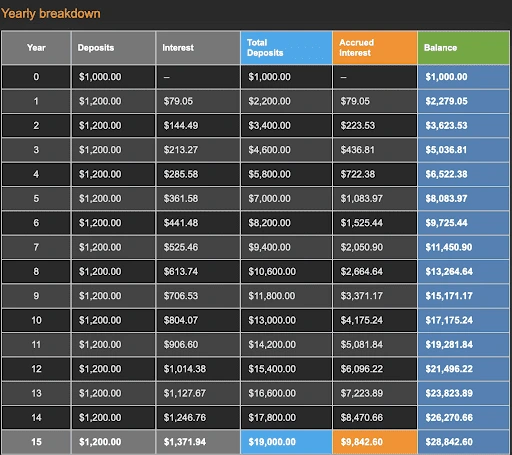
You can calculate your own variables on various websites, here is where the table above comes from. The reason why we are mentioning the compound interest is because you might want to evaluate the possibility of using it to maximize your returns.
Keep in mind, though, that the hypothesized 5% yearly return is an example. No index fund manager can guarantee any specific return on the investment you choose (if they do, steer away, they’re lying). What they can and will do is tell you the average return that the fund has had in the past years. Past returns are not guaranteed for future results either. But then again, we are talking about index funds, and indexes tend to grow in the long run.
It’s now time for a very important word(s) of advice that applies once you have already made your decision to invest.
How to manage yourself when investing
The previously mentioned cognitive biases also apply, if not more, to the phase after the decision to invest has been made. And the list of these errors is much longer than the few ones we described. First, though, we would like to warn you against a very dangerous enemy for all investors: greed.
Greed might have had you question the decision of using an index fund to invest. If the stock market is ever growing but only an average of 10% per year, wouldn’t it be better to pick stocks and get much higher returns? Yes, it would if you managed to become one of the few unicorns among fund managers who are capable of consistently beating the market.
The truth is that, on average, the vast majority of retail and institutional investors are not capable of doing that. And the exceptions to this rule are so few that they become exactly what proves the rule to be true.
Greed can be associated with other biases that will invariably cause you to make mistakes, such as the overconfidence you will surely display once you manage to put a certain number of good choices in a row. You think you have mastered the game, and you become less cautious, make badly pondered decisions, and end up losing money.
And greed also goes with the bandwagon effect, another cognitive bias similar to the herd mentality bias, which will have you follow what everybody else does because they all seem to be making money without effort. 2008 and the subprime bubble were partially due to this error. But instead of giving you the list of all the cognitive mechanisms that might put you and your money in danger, we want to keep it simple, and we will just give you some general and easy-to-follow advice.
- Find the instrument you prefer, and here, we strongly suggest you choose an index fund and get in.
- Decide on a monthly amount to add to your investments in order to tap into the power of compound interest.
- Stick to the plan for at least 10 years.
- Resist any temptation to time the market and pick the winners.
Timing the market is a useless endeavor. First off, you can never be sure you entered at the best time, and while you wait, the market goes on and on without you profiting from it.
Secondly, in the long run, since the market grows, it does not matter when you get in, what matters is that you do it and are consistent. As far as stock picking is concerned, we repeat that 99.99% of investors are simply not good enough to consistently beat the market, so you’d better keep it simple and make do with the yearly 10% the S&P 500 has been doing for the past 100 years.
People don’t invest, but they should! Key takeaways
We started this article with a question: “Why people don’t invest in the S&P 500”?
As we saw, it is mainly due to a natural and highly functional (in evolutionary terms) loss aversion. Nonetheless, investing is one of the best things you can do with your money both to protect its value and to grow your capital for more or less ambitious goals. When you do decide to invest, though, you need to be careful and choose the asset classes wisely.
At The Fin Zen, we highly recommend the stock market and, more precisely, an index fund on the stock market. It will remove many of the mistakes you might make due to your inexperience and will not force you to stress over active management. The fund will do it for you.

